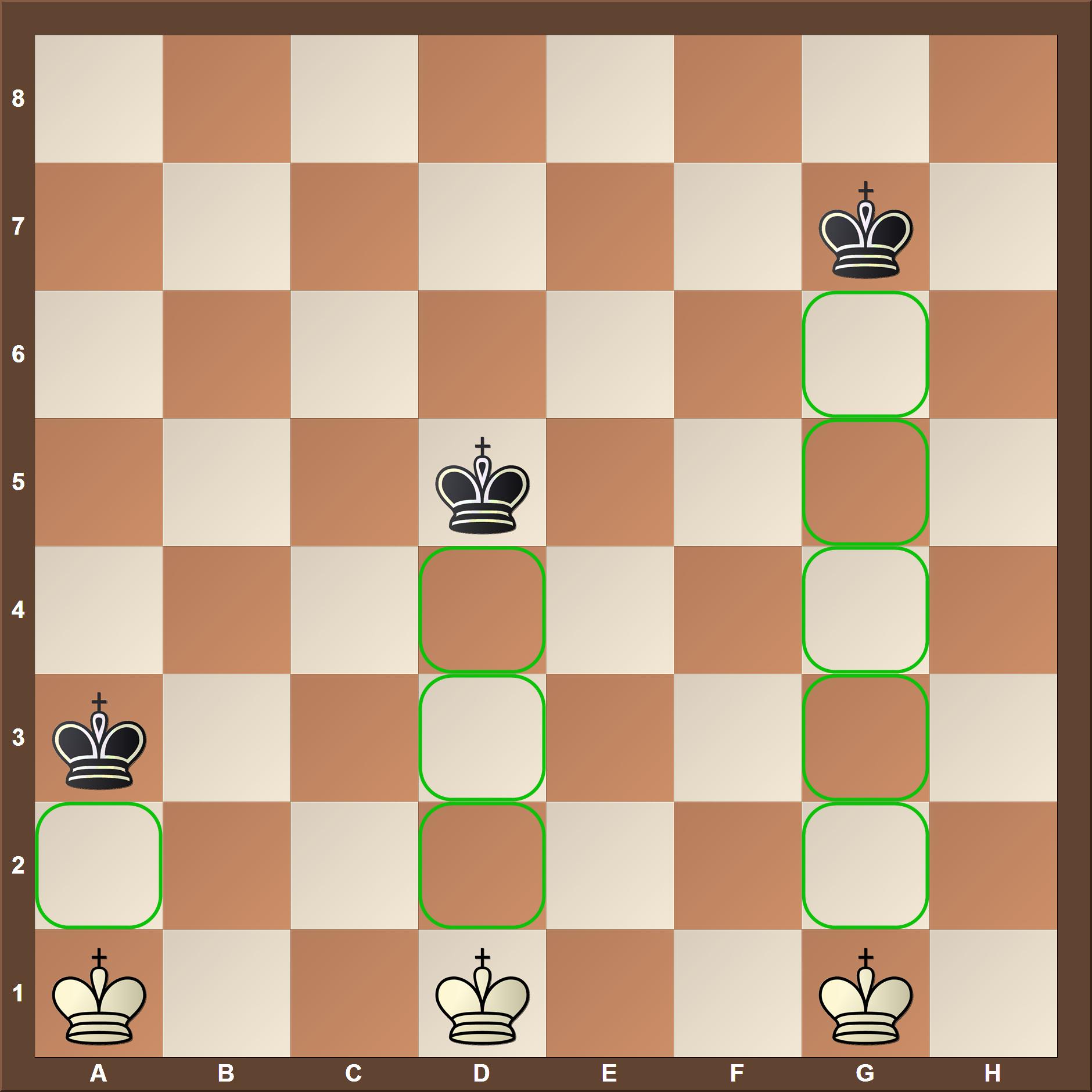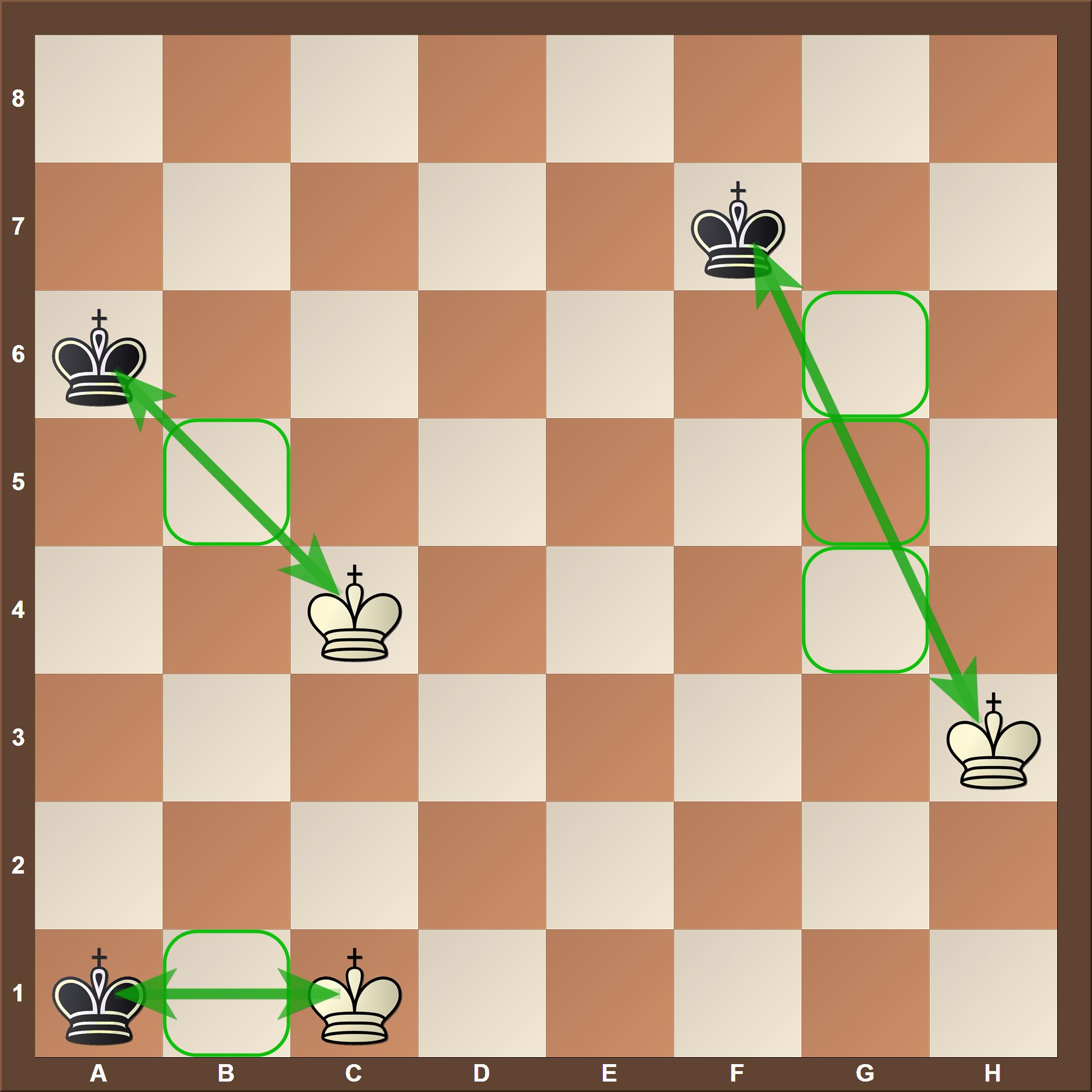Rule 2: Taking the opposition.
What we call "The opposition" is the situation occurring when the Kings face each other on a rank or file, with only one, three or five squares in-between them. As you understand, there is always an odd number of squares between the two kings.
"Zugzwang" (compulsion to move) is a German word which basically means, "It is your turn to move, and all of your moves are bad!" and sometimes having to move can lose the game! There is no "pass" or "skip a move" in chess.
"Corresponding squares" are squares on which both sides find themselves in zugzwang. So we can say that the opposition is only a special case of corresponding squares and taking the opposition basically means that we put our opponent into zugzwang. His king will have to leave its ideal position, which allows us to gain some direct benefits.
There are several types of opposition:

Direct opposition, e.g.: Kings on a1 and a3 (one square between them)
Distant opposition, e.g.: Kings on d1 and d5 (three squares between them)
Long distant opposition, e.g.: Kings on g1 and g7 (five squares between them)

Side (Horizontal) opposition, e.g.: Kings on a1 and c1
Diagonal opposition, e.g.: Kings on a6 and c4 and
Asymmetrical opposition (very rare), e.g.: Kings on f7 and h3 (odd number of files and ranks).
Remember
Opposition and zugzwang are two highly important topics in pawn endgames.



